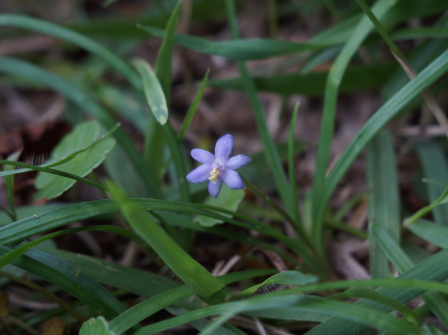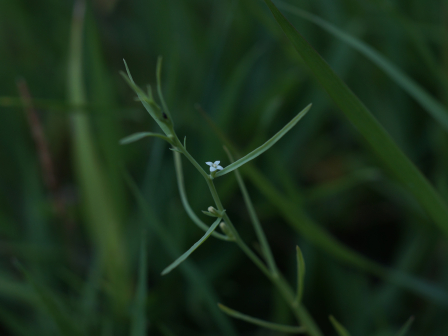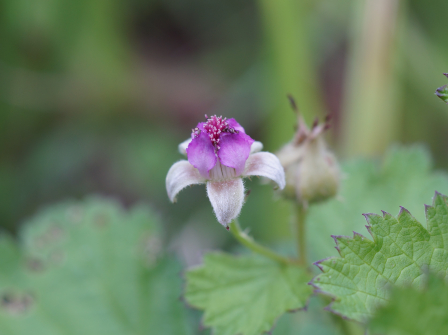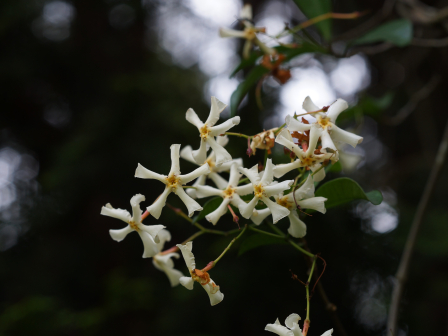フィールド日記
2023.07.28
ニガクサ
ニガクサが咲いています。湿った明るい草地に生えるシソ科の植物です。シソ科の花は唇のように花びらが上下2つに分かれた唇形花をもつものが多いですが、本種は上側の花びらが極端に小さいため、下側の花びらしかないように見えます。和名は苦草ですが、茎や葉は特に苦くはないそうです。
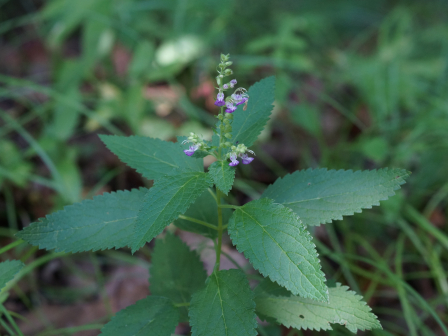
2023.07.25
アラゲハンゴンソウ
アラゲハンゴンソウが咲いています。北アメリカ原産の帰化植物です。名前にアラゲとあるように、茎には硬い毛が生えています。きれいな花ですが、在来種の生息域を奪うなどの生態系への影響が心配されています。
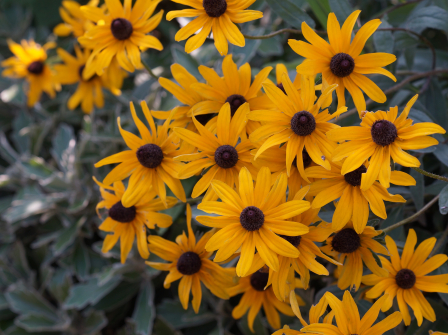
"Arage-Hangon-Sou (アラゲハンゴンソウ)" plants are in bloom. They come from North America. As its name "Arage (アラゲ)" suggests, they have hard hair on their stems. Their flowers are beautiful, but there is a concern for their effect on the ecosystem because they are taking over the habitats of local plants.
2023.07.21
マンリョウ
マンリョウが咲いています。林内に生える低木で、夏に腺点のある白い花を咲かせます。冬に赤い実を多数つけることから縁起の良い木とされ、庭などに植栽されることも多いです。
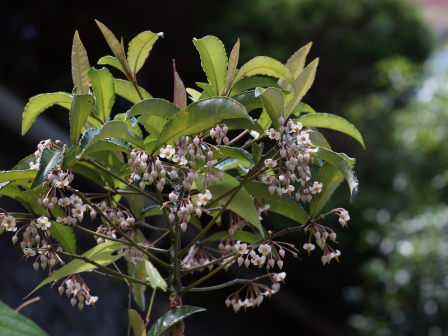
"Manryou (マンリョウ)" trees are in bloom. They are shrubs that grow in forests and bear white flowers that have glands in summer. Since they bear a lot of red fruits in winter, they are known as lucky trees and are planted in gardens.
2023.07.18
ヤマユリ
ヤマユリが咲いています。強い芳香のある野生のユリで、日本固有種です。林縁などに普通に見られるユリですが、栽培しようと思うと案外難しいようです。
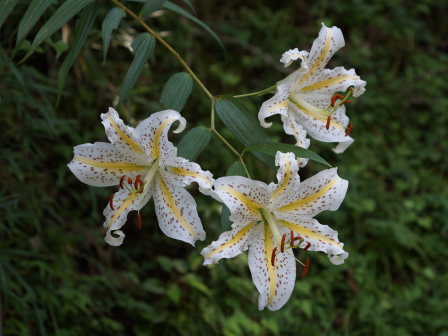
"Yamayuri (ヤマユリ)" plants are in bloom. They are wild lilies with strong fragrance that are an endemic species to Japan. They are commonly seen on the edge of forests, but unexpectedly, it's difficult to grow them in gardens.
2023.07.14
ヒメヤブラン
ヒメヤブランが咲いています。地下にはう茎を出してなかまを増やし、芝地などに群生します。芝生に混じって生えているとあまり目立ちませんが、よく見ると紫色のかわいらしい花を咲かせています。
"Hime-Yaburan (ヒメヤブラン)" plants are in bloom. They spread by developing their underground stems and grow in cluster on grass fields. They are not outstanding in the grass, but they bear cute purple flowers.
2023.07.11
ウツボグサ
ウツボグサが咲いています。草地や道端に生える多年草です。和名は、花穂が弓矢を収納するための道具である靭(うつぼ)に似ていることに由来するそうです。
"Utsubo-Gusa (ウツボグサ)" plants are in bloom. They are perennial plants that grow in grass fields and roadsides. The name comes from the fact that their flower spikes look like the boxes for storing traditional bows and arrows called "Utubo (靭)."
2023.07.07
コウゾリナ
コウゾリナが咲いています。草地などに普通に見られるキク科の越年草です。全体に赤褐色の剛毛があり、触るとザラザラしています。このようすから男性のひげ剃りを連想し、「顔剃菜(かおそりな)」または「剃刀菜(かみそりな)」から転じてコウゾリナと呼ばれるようになったといわれています。
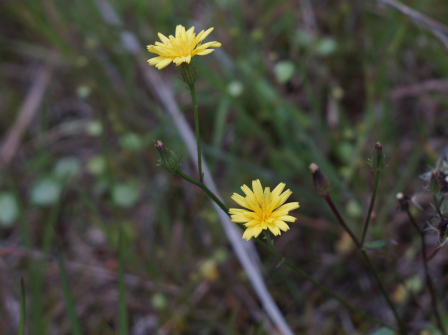
2023.07.04
カナビキソウ
カナビキソウが咲いています。明るい草地に生える多年草です。自ら光合成をする一方で、根の一部が吸盤状となり、他の植物の根から養分を吸収する半寄生植物です。和名は「鉄引草(かなびきそう)」といいますが、由来は不明だそうです。
"Kanabiki-Sou (カナビキソウ)" plants are in bloom. They are perennial plants that grow in sunny grass fields. They are a semi-parasitic plant. While they photosynthesize, some part of their roots become sucker and take nutrition from other plants. It is uncertain where their name comes from.
2023.06.30
ナワシロイチゴ
ナワシロイチゴが咲いています。明るい草地などに生える、キイチゴのなかまです。赤く熟した果実は食べることができます。花の形は少し変わっていて、ピンク色の花弁は、おしべとめしべを包むように直立しています。
"Nawashiro-Ichigo (ナワシロイチゴ)" plants are in bloom. They are a wild berry growing in sunny grass fields. Their red berries are edible. Their flowers are a little bit strange as its pink petals stand upright covering its stamens and pistils.
2023.06.27
テイカカズラ
テイカカズラが咲いています。つる性の木本で、他の木によじ登り、芳香のある白い花を咲かせます。和名は鎌倉時代の歌人・藤原定家(ふじわらのていか)に由来します。定家が恋した式子内親王の墓石にからみついた本種をテイカカズラと呼ぶようになったそうです。
"Teika-Kazura (テイカカズラ)" trees are in bloom. They are woody vines that climb other trees and bear white fragrant flowers. The name comes from a poet of Kamakura period, "Fujiwara-No-Teika (藤原定家)". People started to call this species "Teika-Kazura", because the plants climbed around the tombstone of Imperial Princess Shikishi, who Teika loved.


